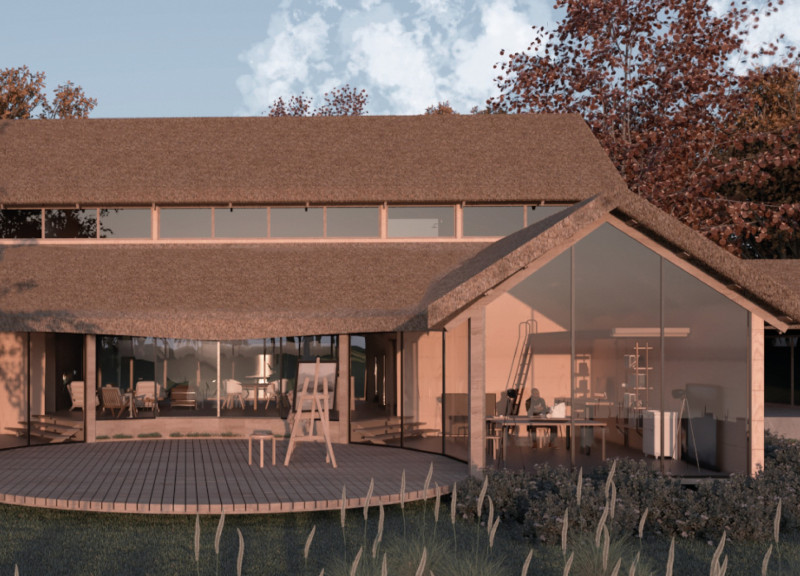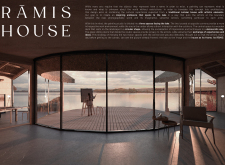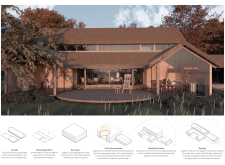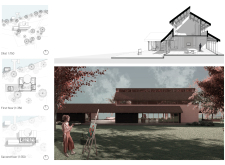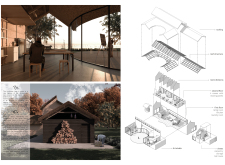5 key facts about this project
The design near Cernostes Lake in Latvia creates an environment for artists that thoughtfully interacts with its surroundings. It serves as both a residence and a creative workspace. The overall design concept combines elements of traditional Latvian architecture with the needs of modern artists. The layout features three studio spaces that face the lake, allowing for various artistic activities while promoting both personal reflection and team collaboration.
Conceptual Framework
The core idea behind the layout is to balance the known aspects of creating art with the unknown elements that inspire creativity. By arranging the studio spaces for individual and group work, the design supports different ways of making art. A central circular deck extends into the landscape, encouraging connections among artists while providing a spot for discussion and shared inspiration.
Material Use
Materials are chosen with care to enhance both function and aesthetics. The existing stone foundation has been thoughtfully preserved, minimizing disruption to the environment. In addition, wooden elements are incorporated in the central deck, which adds warmth to the overall atmosphere. These materials support a creative and inviting environment, blending local traditions with contemporary needs.
Sustainability Considerations
Sustainability plays an important role in the design approach. A hydronic heating system uses wood as an energy source, ensuring warmth while reducing the need for electricity. This choice reflects a commitment to environmentally friendly practices. Further, an attic space has been designated as a habitat for local bat species, showing that ecological conservation is valued alongside human use.
Natural Light and Views
Maximizing natural light is a crucial aspect of the design. Double-glazed windows are strategically placed to allow ample sunlight while reducing heat loss. These windows enhance the working environment within the studios, creating an inviting space for artistic activities. The views of the lake provide an ongoing source of inspiration, reminding artists of the beauty of their natural surroundings.
Attention to details, such as the connection between indoor spaces and the outdoor deck, reinforces the design's focus on a supportive environment for artistic practice.


